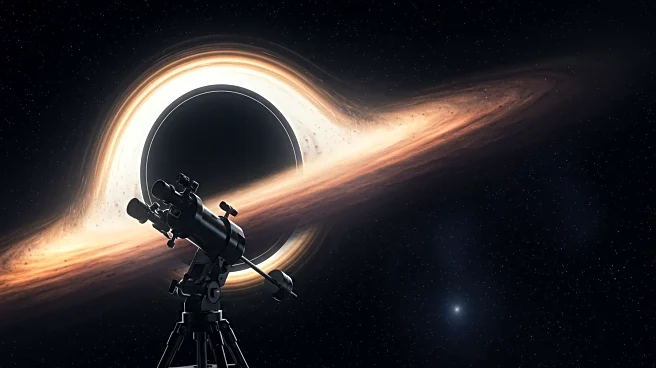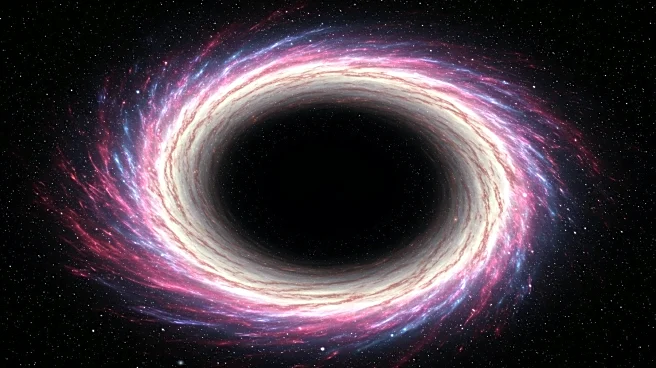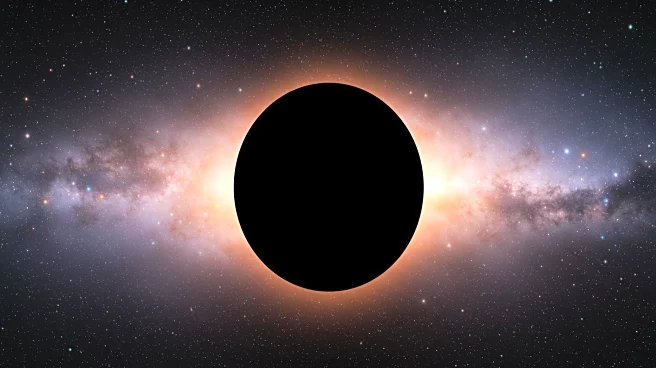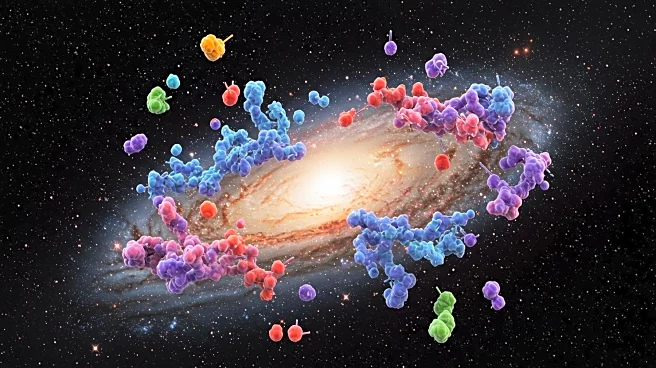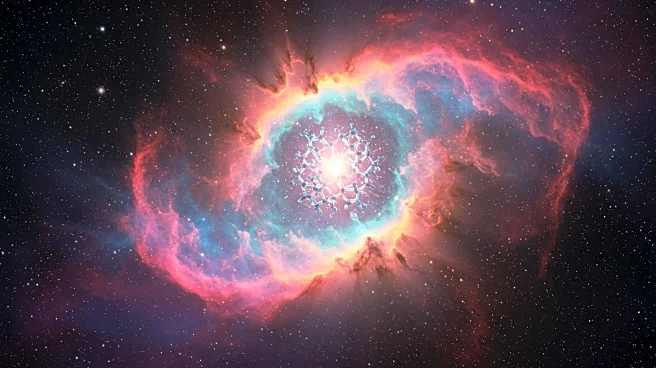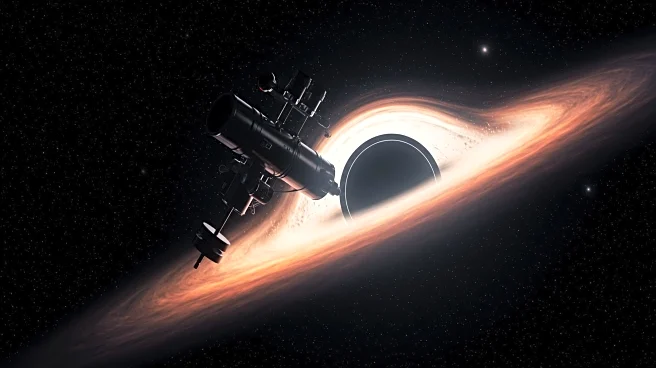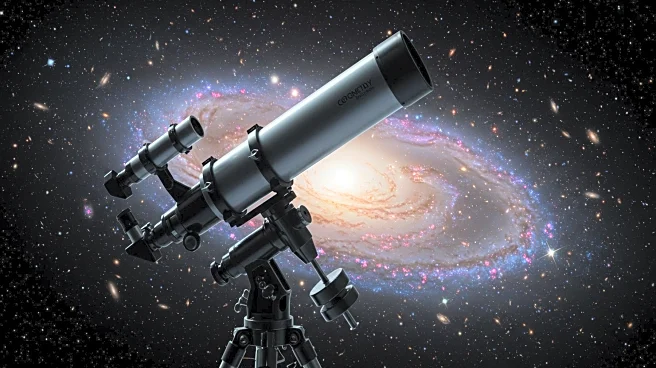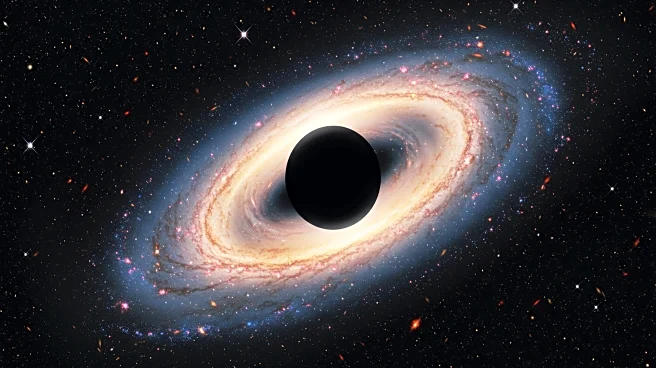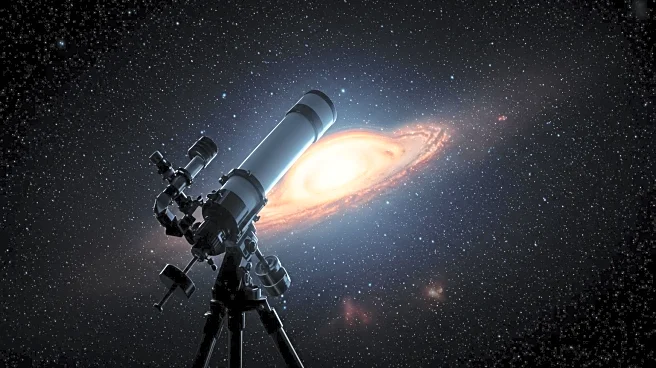What's Happening?
Recent findings using the James Webb Space Telescope have introduced a groundbreaking hypothesis that the universe might be contained within a massive black hole. This discovery challenges long-held beliefs about galactic rotations and the fundamental structure of the universe. Researchers at Kansas State University have examined the rotations of distant galaxies, revealing a pattern that could transform our understanding of the universe. The telescope provided images of 263 ancient galaxies, some dating back to 300 million years after the Big Bang, with about 60% rotating clockwise. This finding contradicts the previous assumption of random galactic rotation and suggests a potential cosmic order. The hypothesis proposes that the universe's position within a black hole's gravitational field might influence the common rotational direction observed in galaxies.
Why It's Important?
The potential realization that our universe might reside within a black hole profoundly affects cosmology. It challenges existing views concerning the universe's origins, structure, and ultimate fate. If this hypothesis proves true, it would require a reevaluation of fundamental cosmic principles and the development of new models to describe the universe's behavior within such a context. This discovery emphasizes the necessity of continued cosmic exploration and observation. As we enhance our tools and techniques, such as advancing the capabilities of the James Webb Space Telescope, we edge closer to uncovering revolutionary insights into the universe's mysteries.
What's Next?
Further investigation is needed to validate the black hole hypothesis and explore alternative explanations for the observed galactic rotations. Researchers consider the possibility of observational bias, particularly the Doppler effect, which can affect how we perceive the motion of galaxies. Addressing these biases is essential for ensuring the accuracy of future research and for substantiating the groundbreaking claims made by current studies. The drive to understand the universe's true nature propels the scientific community to push the boundaries of knowledge and question the very fabric of reality.
Beyond the Headlines
The hypothesis that the universe might be situated inside a black hole raises the possibility that fundamental cosmic principles, such as matter distribution and the flow of time, operate differently within this unique cosmic structure. This theory opens new pathways for comprehending the universe's true nature and its ultimate destiny. The findings from the James Webb Space Telescope present numerous possibilities, challenging us to reconsider our place in the cosmos.
